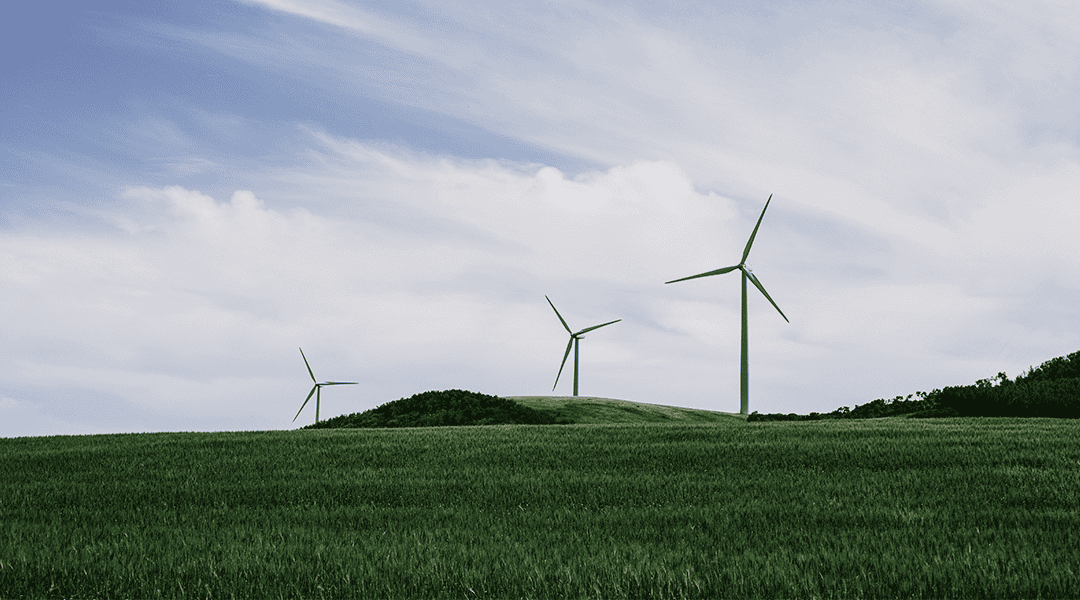Everyone’s heard the spiel: Renewable energy is better than fossil fuels for one reason or another. But what about wind, solar, and hydro power make it stand out from sources like coal? The truth is that there are pros and cons of renewable energy, and you can’t fully understand why renewables are superior to fossil fuels until you know their advantages and disadvantages.
Pros and Cons of Renewable Energy
Here’s the truth: The pros of renewable energy vastly outweigh the cons. Renewables are often more affordable than fossil fuels in the long term, especially when factoring in the economic impact of climate change, which is expected to be about $38 trillion a year by 2049. Yes, you read that correctly. But it would be dishonest to say that renewable energy has no drawbacks, so let’s dig deeper.
Pro: Renewable Energy Won’t Run Out
Whether you believe in peak oil or not, one thing’s for sure: We don’t have to worry about renewable energy running out. The earth’s rotation and energy from the sun are the primary sources of energy powering renewables, neither of which will stop for billions of years. We can harness nearly unlimited energy to power our homes and lives at scale— we just need to have enough infrastructure.
Con: We Need to Build More of It
One disadvantage of alternative energy sources is that we lack sufficient infrastructure for it. We live in a world built for fossil fuels, and it’s taking time to transition. Right now, renewable energy makes up a little over 22% of all energy production in the United States, about half of which comes from wind.
People often cite land usage as a reason not to build more renewable energy, but it would use less space than most think. The US could go entirely green with just 0.84% of land, whereas the fossil fuel industry takes up 1.3% of US land. By switching to renewable energy, there’s more space for agriculture, development, and preservation.
Pro: Renewable Energy Creates Jobs
One of the most exciting aspects of the renewable energy industry is its potential to drive economic growth and create jobs. Unlike fossil fuel industries, which rely heavily on mechanized processes and dwindling resources, renewable energy systems—especially solar and wind—are highly labor-intensive. Building, installing, and maintaining solar panels or wind turbines requires skilled workers, providing steady employment opportunities and boosting local economies.
According to a report from the International Renewable Energy Agency (IRENA), renewable energy jobs globally reached 12.7 million in 2021, with the solar sector accounting for more than 4 million jobs. As the world transitions toward greener energy solutions, job growth in the renewable sector is projected to
skyrocket. The U.S. Bureau of Labor Statistics predicts that jobs for solar photovoltaic installers will grow by 52% from 2020 to 2030. This makes renewable energy a practical solution for sustainable energy and employment.
Con: Intermittency Issues
Renewable energy sources like solar and wind are intermittent, meaning they depend on natural patterns and may not produce energy consistently. Solar panels, for example, only generate electricity when the sun is shining, and wind turbines are only effective when windy. This intermittency can be a drawback, especially if backup power sources or storage solutions aren’t in place.
Fortunately, advances in energy storage, such as lithium-ion batteries and emerging technologies like molten salt storage, are making it easier to store renewable energy during peak times. With continued investments in battery technology, the gap created by intermittency is expected to shrink, making renewables an even more reliable energy source. Moreover, grid management strategies are evolving to make balancing energy supply and demand easier, even with renewable sources.
Pro: Reduces Greenhouse Gas Emissions
One of the most critical advantages of renewable energy is its ability to reduce greenhouse gas emissions. Fossil fuel combustion releases vast amounts of carbon dioxide (CO2), leading to climate change. According to the Environmental Protection Agency (EPA), electricity production is one of the largest sources of greenhouse gas emissions in the United States, primarily because of fossil fuels like coal and natural gas.
Switching to renewable energy sources can significantly reduce these emissions. For example, generating electricity from solar energy produces no direct emissions, while wind energy also emits virtually no greenhouse gases during operation. Hydropower and geothermal energy also have low carbon footprints. By adopting renewables on a larger scale, we can make substantial progress toward global climate goals, helping to limit global temperature rise and reduce the frequency of extreme weather events.
Con: Higher Initial Costs
The upfront costs of installing renewable energy systems, such as solar panels or wind turbines, can be higher than fossil fuel-based systems. This initial investment can be a barrier for individuals, businesses, and governments looking to transition to green energy, especially in regions with limited financial resources.
However, renewable energy costs have been dropping rapidly over the past decade.
The price of solar power, for example, has fallen by about 90% since 2009. In many regions, renewables are already cheaper than fossil fuels on a per-kilowatt-hour basis. Additionally, there are government incentives, tax credits, and rebates available to help offset the initial costs of installation. Many states in the U.S., as well as federal programs, offer subsidies for solar installations, making renewable energy more accessible than ever.
Pro: Improves Public Health
Burning fossil fuels releases harmful pollutants, including sulfur dioxide, nitrogen oxides, and particulate matter. These pollutants contribute to respiratory diseases, cardiovascular problems, and even premature death. The American Lung Association has found that exposure to these pollutants, especially for vulnerable populations like children and the elderly, can lead to chronic health issues and increased healthcare costs.
Renewable energy sources, on the other hand, produce little to no air pollution. By shifting toward renewables, we can reduce pollution-related illnesses, improve public health, and lower healthcare costs associated with pollution. According to one study, the healthcare savings from reducing air pollution could reach up to $600 billion annually. With renewable energy, we’re investing not just in a cleaner environment but also in the well-being of our communities.
The Bottom Line: The Case for Renewable Energy
Ultimately, the pros of renewable energy far outweigh the cons. The transition to renewables is crucial to creating a sustainable, healthier, and economically vibrant future. While challenges remain, advances in technology and infrastructure are making renewable energy more viable every year. From reducing greenhouse gas emissions to creating jobs, improving public health, and decreasing long-term energy costs, renewables present a clear path toward a cleaner, more stable future.
Take Action: Choose Solar with Purelight
If you’re ready to make a positive impact, installing solar panels on your home is one of the most effective ways to contribute to a greener future. Not only will you be lowering your carbon footprint, but you’ll also be investing in long-term savings on your energy bills. With Purelight Power, you can harness the sun’s power with affordable, high-quality solar installations designed to maximize your home’s energy efficiency.
Take the first step today—contact Purelight Power to learn how easy it is to switch to clean, renewable energy. Let us help you reduce your energy costs, increase your home’s value, and play your part in building a more sustainable future for generations to come.




